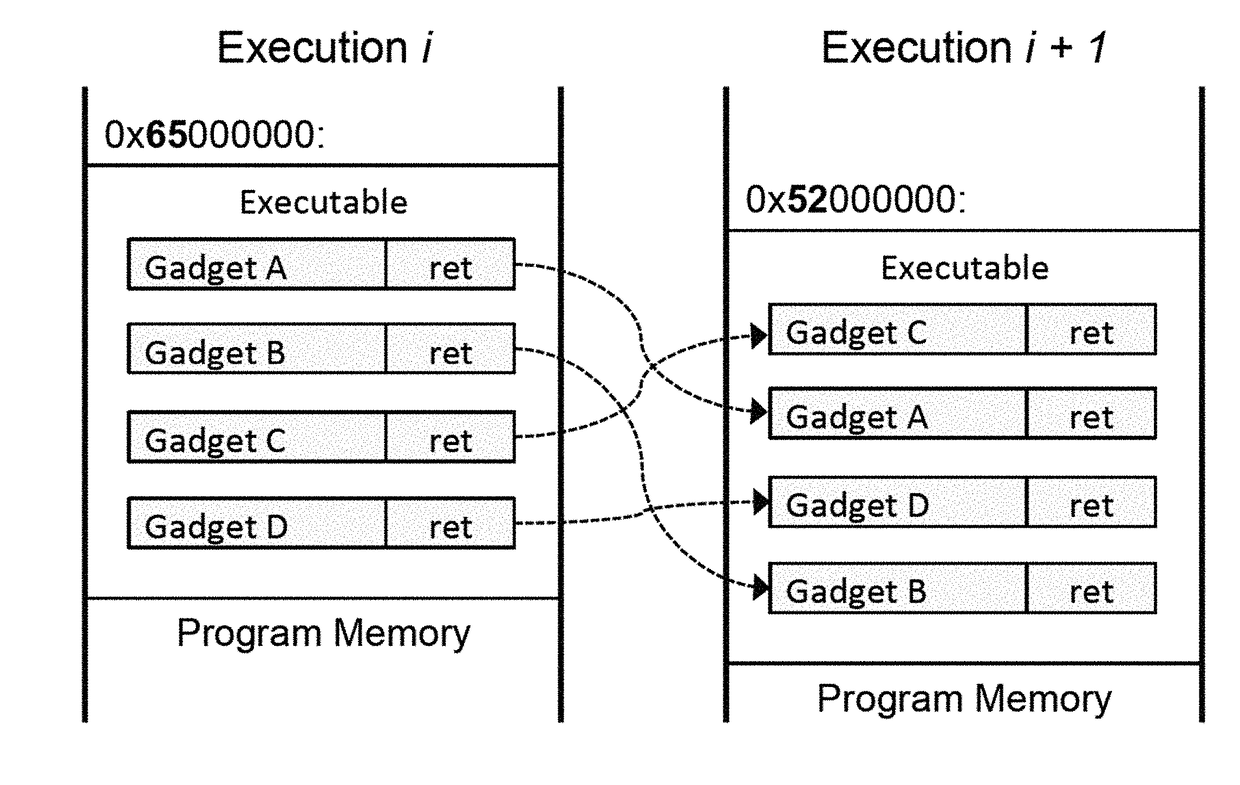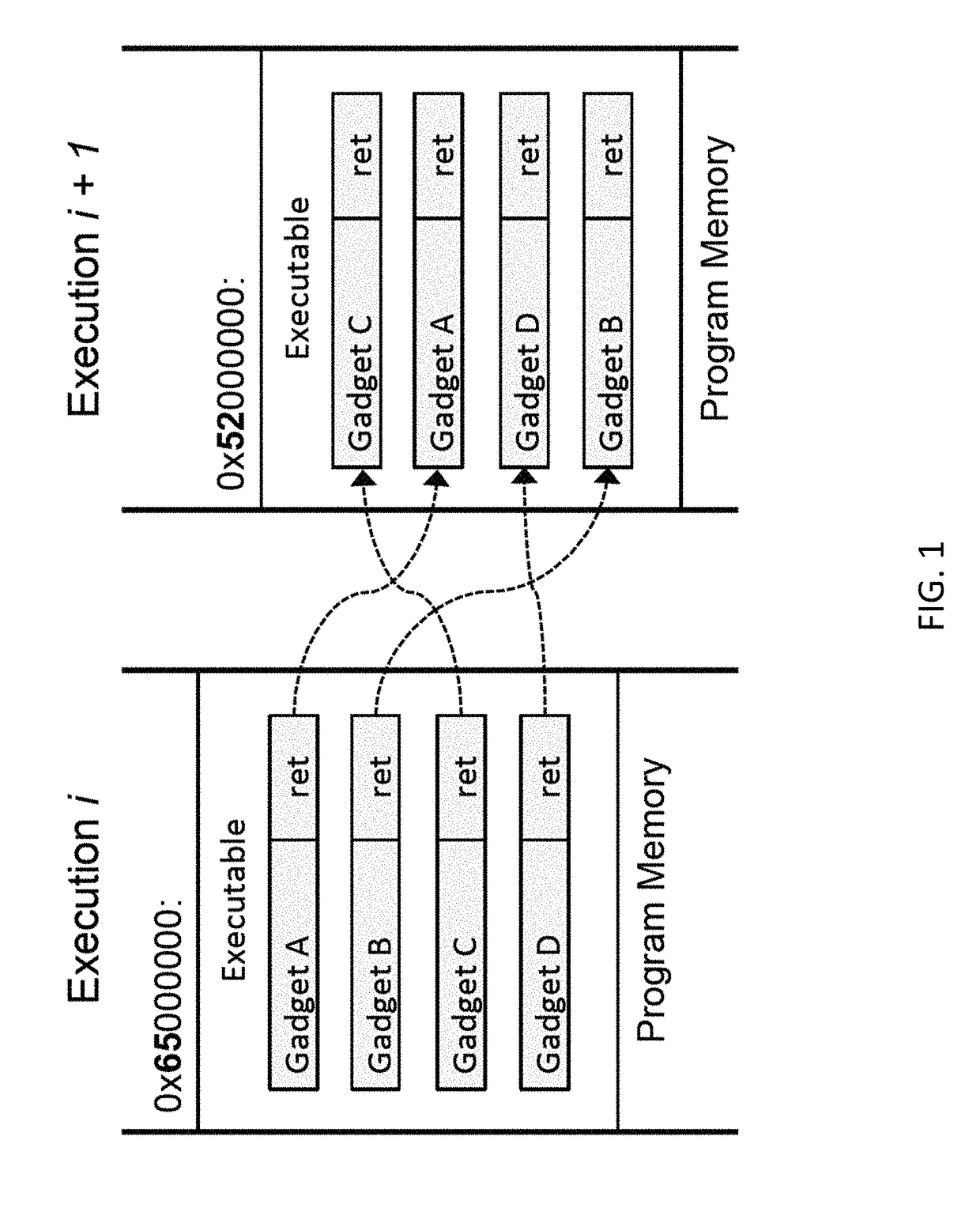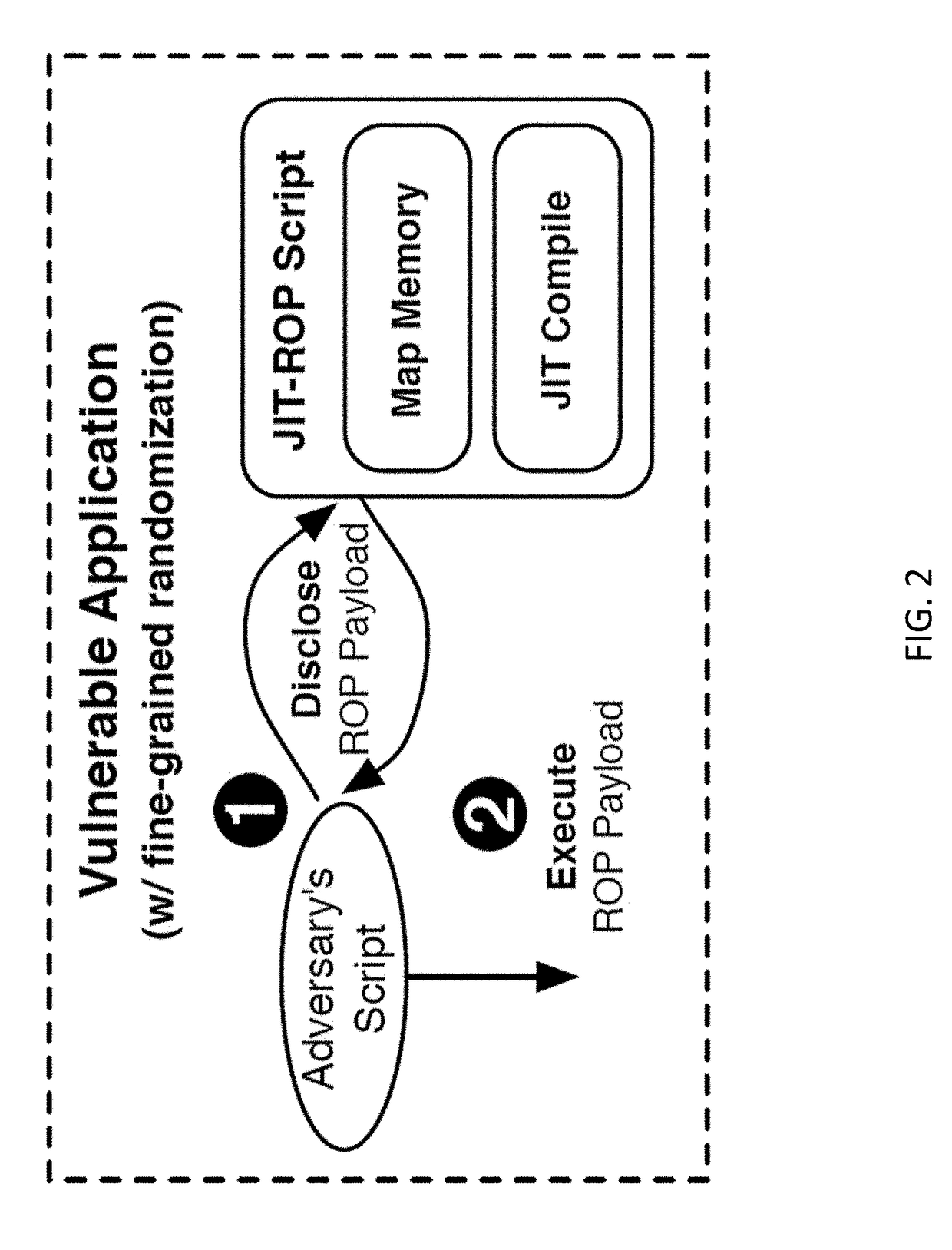Unfortunately, these implementations suffer from several serious problems.
First, ASLR is susceptible to
brute force attacks on 32-bit systems, as the entropy of possible region locations is small [26, 32].
Unfortunately, this policy was shortly thereafter shown to be insufficient in preventing all types of code reuse.
Just-in-Time
Code Reuse Attacks: Fine-grained
randomization alone, even assuming a perfect implementation, does not prevent all control-flow hijacking attacks that leverage code reuse.
Unfortunately, such an approach requires heavy program
instrumentation, and the necessary program transformations are only demonstrated to be achievable via source-level
instrumentation.
Hence, the approach of Backes and Nürnberger [3] has significant drawbacks in compatibility.
More concerning is the fact that they fail to address the problem of code pointers on the stack and heap.
[13] also describes a strategy for preventing just-in-time code reuse based on code-path
randomization, but unfortunately this approach also assumes the existence of secret data regions, which is not necessarily feasible in practice.
They note that x86 and ARM architectures do not provide hardware-supported memory permissions that enable one to execute code that is not readable.
Thus, their primary challenge lies in designing and implementing a practical
software-supported approximation of execute-only memory.
In short, their solution is to initially make all code regions inaccessible, which causes a kernel-mode memory fault when code is executed or read.
While the concept behind XnR [4] is interesting in theory, it suffers from a number of practical weaknesses that are completely overlooked.
A much bigger problem, however, is the failure to directly address applications that contain data mixed into the code section, which has significant performance implications.
Not only do the authors fail to provide a threshold value, but this
thresholding is ill-conceived.
One drawback to this approach is that all recent processors now make use of a unified cache, rendering this approach incompatible with modern hardware.
Further, static code analysis on binaries is a difficult problem, leaving no other choice but to rely on human intervention to separate code and data in closed-source
software.
Thus, the security guarantees imbued by this approach are only as reliable as the human in the loop.
Granted, their approach provides strong
enforcement, but is unable to provide binary compatibility to support closed-source
software.
Even the authors themselves acknowledge this is a significant limitation.
As it provides protection for kernel code only, however, ExOShim cannot defend against JIT-ROP attacks in
user space.
[36] note that defenses requiring
source code, recompilation, or human intervention are impractical, unscalable and too costly.
We note that no prior work meets all these criteria.
Thus, one can neither rewrite existing code nor directly inject new code into a protected application.JIT Mitigations: We assume JIT-spraying [6, 28] mitigations such as JITDefender [11] are in place—that is, one cannot successfully convince an in-built JIT
compiler (
JavaScript for instance) within the vulnerable application to generate arbitrary malicious logic.
However, without fine-grained randomization the
adversary does not
gain any new knowledge from reading the contents of code pages.
As alluded to earlier, merely forbidding read access to
program code regions fails to address the fact that commodity binaries and libraries contain data embedded within their code sections.
Indeed, ignoring this challenge leads to a false sense of security.
As a result, gadgets revealed via memory disclosure cannot be later executed, hence preventing just-in-time code reuse.
While the NEAR principle is simple in theory, a number of challenges need to be overcome, not the least of which is the seeming lack of hardware features to support an efficient design.
As a result, a later execution of those bytes causes an invalid
opcode exception and the process is terminated, thus preventing the use of leaked code in a code reuse
attack.
This does not compromise security because no code
byte that is read at any point during process execution can later be executed and used in an
attack.
However, our approach introduces performance overhead associated with data reads in the code section.
Indeed, each
byte, word or double word of data that is read leads to costly read exceptions at run time.
This presents a challenge, as the
memory management units available with x86 and x86-64 CPUs do not provide permissions at this
granularity.
Unfortunately, that approach requires that at least one page, the currently executing page, is available for both execute and read.
Further, we seek an approach that does not leave any code accessible to the adversary whatsoever, much less an entire page of code.
One problem with this approach is dealing with shared libraries.
This approach works on Linux (as a
source code modification), but unfortunately the Windows kernel performs checks within strategic
memory management functions to verify the consistency of pages used.
When an inconsistent state is observed the OS faults and a
reboot is required.
This path is therefore infeasible without the ability to modify the closed-source Windows kernel.
While this approach works in practice, the use of
virtualization has performance implications and overly complicates the seemingly simple task of providing code read notifications.
As applications are unable to directly modify page tables, they cannot directly change which protection keys are applied to which pages.
Unfortunately, at the time of this writing, this hardware is not yet available.
Unfortunately, all of the primitives for supporting code read notification incur a non-negligible performance overhead in the form of a context-switch on each read, either at the kernel-level for x86-64 and ARMv8, or a
virtual machine exit on x86.
Unfortunately, separating code and data on an x86 architecture is provably undecidable [41].
Identification of jump tables proved to be more challenging.
This on-load functionality is essential to its practicality, as manually purifying each binary and
library offline (as done in Heisenbyte [37]) is prohibitive, due to possible human errors and sheer volume of binaries requiring purification.
Lastly, our empirical results in Table 5 show that NEAR incurs a modest memory overhead for protected processes.
 Login to View More
Login to View More  Login to View More
Login to View More 


